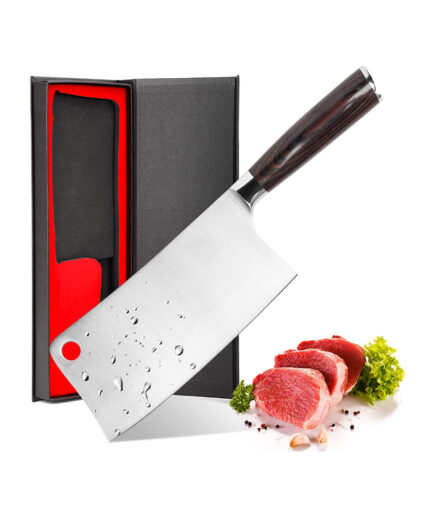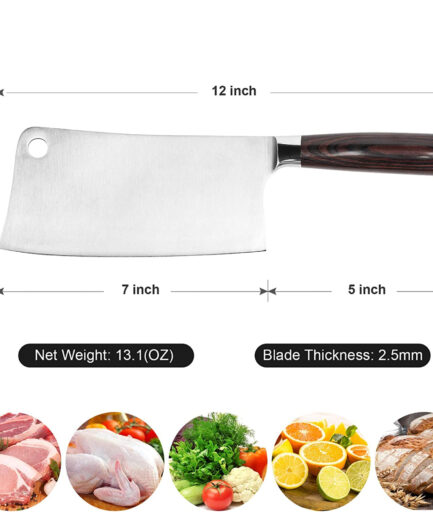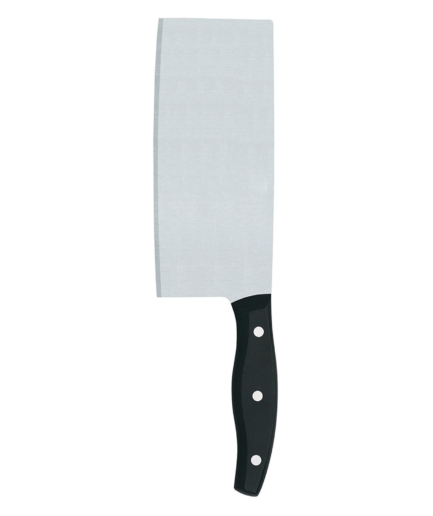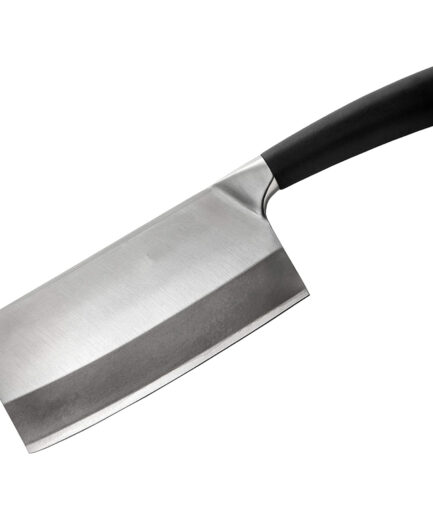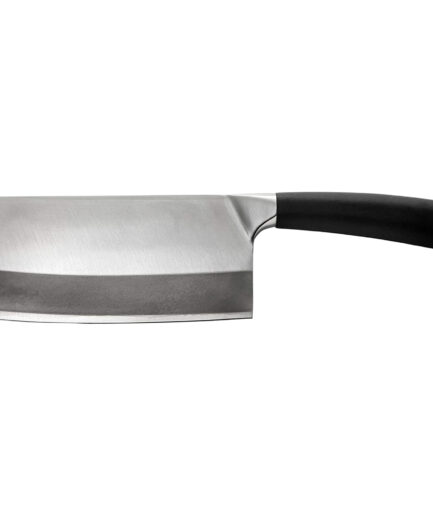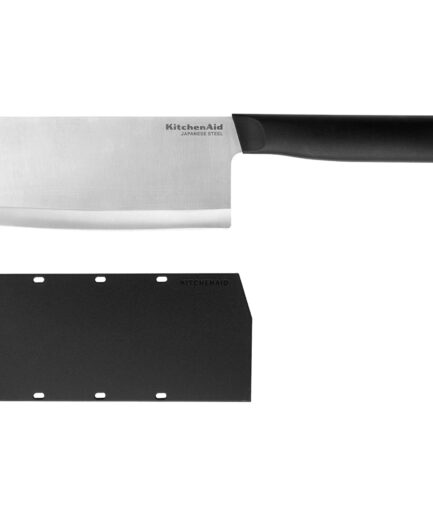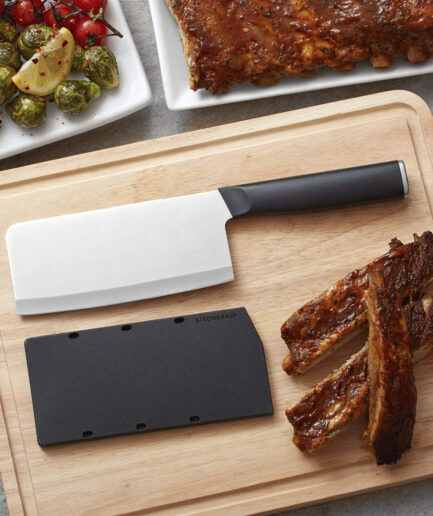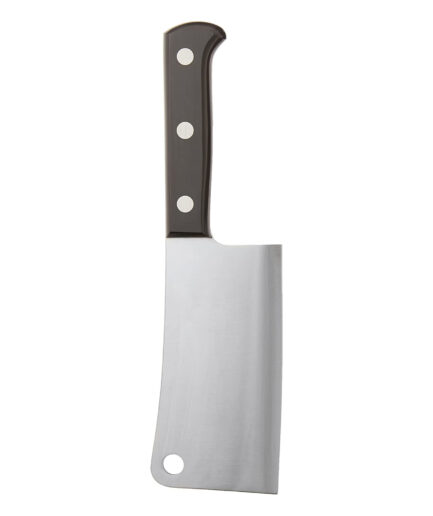-
7 Inch Meat Cleaver Kinfe-Wooden Handle
179.00$ -
7-Inch Chef’s Knife/Vegetable Cleaver
199.00$ -
7-inch Cleaver Chef’s Knife
199.00$ -
Chopping Chef Butcher Cleaver Knife-6.5-inch
70.00$ -
Classic Cleaver Knife 6-Inch-Black
149.00$ -
Heavy Duty Cleaver Knife with Wooden Handle
179.00$ -
Kitchen Cleaver 6 Inch-Black Wooden Handle
199.00$ -
Meat Cleaver Knife 5.5 Inch-Silver
179.00$ -
Universal Cleaver Kinfe-Wooden Handle
99.00$ -
Yoyoknives Meat Cleaver knife, 6″, Black-Stainless Steel
69.00$
Cleaver For sale – Sturdy, Ergonomic Kitchen Cleaver
Cleavers are perfect for dicing and chopping up vegetables, fruit, and meat, making them a useful addition to any commercial kitchen. Despite being called cleavers, these knives are actually all-purpose chefs’ knives with a long, rectangular blade. Despite their thin metal construction, they are lightweight, which allows you to move them quickly to slice meat, chop vegetables, and crush garlic cloves.
A Damascus knife is useful for slicing up meat or vegetables into thin slices, chopping onions for stir-fries, or crushing ginger and garlic for seasoning. The thin, light blades of these all-purpose cleavers will make any job easier, whether you run a restaurant. You can even use the flat side of the blade to transfer chopped ingredients from the cutting board to a pan or wok. Some of our heavy-duty best cleaver knives can cut through meat and bone, while others are designed for use on vegetables. Various blade weights are available for added customization and power so that you can pick the right cleaver for your cutting task.
Is a cleaver the same as a butcher knife?
Meat cleaver knives are typically used for cutting through large pieces of meat, bone, fat, and sinew that would be hard to cut with other knives. Meat Cleaver knives are designed specifically to have a strong edge that can withstand repeated heavy cuts through dense bone and cartilage. Small kitchen tasks like crushing garlic cloves with these chunky kitchen utensils are no problem for these hefty kitchen tools.
In general, cleaver knives are made of softer steel because softer steels are generally stronger, and cleavers are used for heavy-duty kitchen tasks, which means they must resist chipping and breaking. We offer the best selection of cleavers on the Internet at Damascus Knife, one of the original online catalogs for cutlery.
Why choose the best Cleaver for tackling the cooking task?
An outdoor cleaver pocket knife completely changes the game when it comes to outdoor cooking. When you are going to barbecue or grill, you do not need to pack an entire arsenal of knives. Presently, one knife can handle 90% of all work, plus so many more things.
Even if you rarely cook outside, the cleaver is still a good choice because it looks very attractive. The wide blade, slight belly, and flat tip of this knife make it look amazing and perform like a regular kitchen cleaver. When you’re expecting a butcher’s weapon, it’s surprisingly thin and light. The “vegetable knife” is typically the only knife in Chinese kitchens and is used for almost everything.
FAQ’s
- What is the best size for a cleaver knife?
- The Classic 7 1/2-Inch Heavy Cleaver was the best heavy-duty model that we evaluated. In addition to the thick, 3/16-inch spine, this blade is made from medium hardness stainless steel, which ensures it stays relatively sharp while protecting against chips and cracks. In addition, the top can be batoned without causing damage.
- Should I buy a cleaver knife?
- The knife is a good choice for non-professional use at home. Ideal for chopping and cutting meat. I bought it specifically for cutting and chopping boneless meat. When sharpened properly on a whetstone, it retains its sharpness well.
- What should a cleaver be made out of?
- Cleaver knives typically measure between 10.5- and 12-inches long overall. A round hole is located at the blade’s top edge opposite the handle, with a blade length between 6 and 8 inches. Blade height ranges between 3 and 5 inches. As light as 19-ounces to as heavy as 2-pounds, these beefy tools come in a variety of weights.
- Should a cleaver be sharp?
- Most meat cleavers have edges sharpened at 25 or 50 degrees per side, making them very blunt compared to other kitchen knives. Don’t attempt this with a “Chinese cleaver” or a “vegetable cleaver,” as those knives are designed to chop vegetables, not bones.
- Do butchers use cleavers?
- Historically, cleavers have been used to butcher animals, which is why they have fallen out of style. They are sometimes the only tools capable of breaking through heavier bones.
What’s the Cleaver Purchase consideration?
- Blade steel
- While carbon steel is easier to sharpen and likely to hold an edge longer, carbon steel is also brittle and prone to rust, which means it requires a high level of knife care. A stainless steel knife, on the other hand, is rust-resistant and less likely to chip, but it’s a softer steel, so it’s more prone to warping and will dull faster.
- Blade shape
- Blades of some butcher cleaver knife are rectangular, while those of others are slightly rounded from tip to heel. In both cases, clean, uniform cuts are achieved using push cutting, as in a stir fry.
- A full tang
- Blades should extend completely through the handle, where they should be secured with pins or rivets (tangs are the parts of blades that extend into the handle). A blade with this construction will not be damaged or dislodged by aggressive smashing or cleaving.
- A comfortable grip
- In addition to feeling sturdy in your hand, cleavers should be balanced and comfortable to use. If you can, shopping for a cleaver then buy the comfortable handle cleaver, then you can feel better and chop easily anything with a cleaver.
- A straight spine
- Make sure the blade is straight along its edge and that there are no dings along the spine. These defects will make it difficult to make a clean, precise cut.
- Size and weight
- You’ll want to find a cleaver that feels comfortable in your hand. Lighter cleavers are generally easier to use, but they may not be as durable as heavier knives.
- Quality of materials
- It’s important to choose a cleaver that is made of high-quality materials. This will ensure that your knives last longer and stay sharper.
- Price
- Cleaver can vary in price, so it’s important to find one that fits within your budget.

